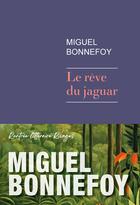-
Date de parution : 29/01/1985
-
Editeur :
Inserm
-
EAN : 9782855985015
-
Série :
(-)
-
Support :
Papier
Résumé:
The history of liver perfusion is one of continuous progress toward the goal of exact simulation of conditions as they exist in the living organism, without the complications implicit with in vivo experiments. The perfused liver bas been a model for over 130 years. In 1855, Claude Bernard... Voir plus
The history of liver perfusion is one of continuous progress toward the goal of exact simulation of conditions as they exist in the living organism, without the complications implicit with in vivo experiments. The perfused liver bas been a model for over 130 years. In 1855, Claude Bernard described the conversion of glycogen to glucose in livers perfused with tap water. Despite this auspicious beginning in France, the true development of this technique in the following decades occurred in Germany. In 1868, Ludwig and Schmidt first recorded the unique potential value of isolating an organ and keeping it alive by perfusion with fresh, oxygenated blood in their work with dog skeletal muscle. They established that by varying the influent perfusate and analysing the effluent and tissue during and after perfusion, it was possible to draw conclusions regarding metabolic processes unique to the organ. Several years later, Asp designed an apparatus to study bile secretion by perfusing isolated rat liver with dag blood. This apparatus was improved in 1885 by von Frey and Gruber and again by Jacobj, who introduced a perfused animal lung into the circuit to improve oxygenation. Using this technique, in 1903 Grutier and Bain were the first to demonstrate glycogen deposition in dog liver in vitro.
Donner votre avis














